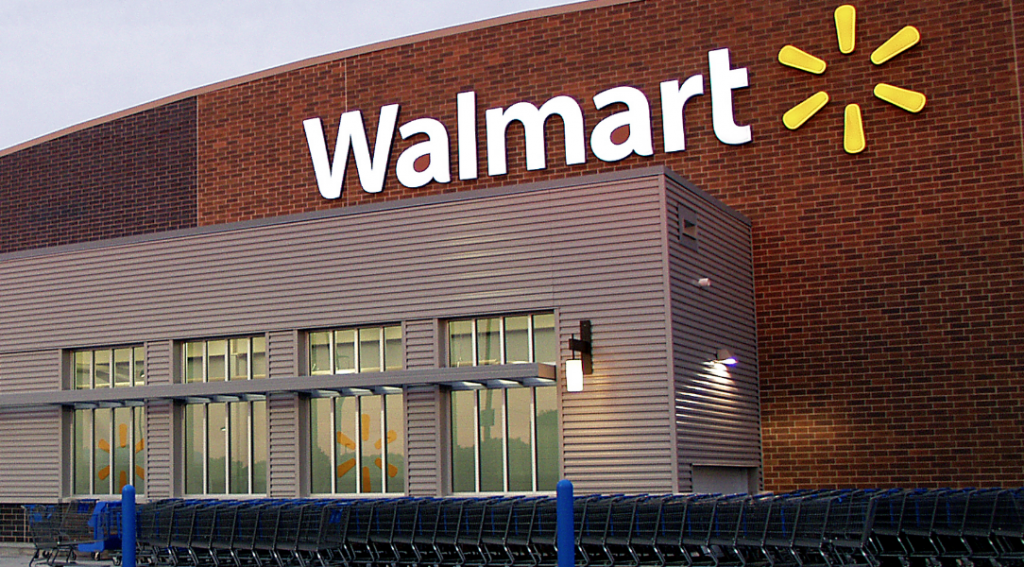
Walmart’s VP of technology, Sanjay Radhakrishnan, adapted its IoT strategy to the pandemic.
Walmart Sees Record Year Due to Technology in IoT
In a year where the pandemic wiped out thousands of businesses of all shapes and sizes around the world, Walmart did pretty darn well.
Walmart made $559 billion in total revenue during the COVID-19 pandemic’s first fiscal year, up from $514.4 billion in fiscal 2019, thanks in part to newly integrated internet of things (IoT) capabilities to improve food quality and lower energy consumption. Walmart claims its systems for IoT deployments are built at a scale unmatched across the retail industry:
“The company reports that every day, it takes in approximately 1.5 billion messages and analyzes over one terabyte of data,” VentureBeat reports.
This proprietary software includes a cloud-based dashboard application to manage volume and detect anomalous events, such as refrigeration failures, to more rapidly repair them, saving ice cream from melting and increasing profit, according to the story written by Manasa Goginini, who interviewed Sanjay Radhakrishnan, Walmart’s VP of technology.
Here are a couple of the questions and responses from her interview. Due to the length of his interview, we are just sharing a couple of the questions with you. You can find the link to the entire interview below.
VentureBeat: How would you describe Walmart’s approach to IoT at a high level?
Sanjay Radhakrishnan: When we started on this journey, we had three key objectives. One was to address this at the scale of Walmart’s, that Walmart can actually leverage the impact of IoT at Walmart scale. The second objective was to ensure that we are the control plane for our data. So, we control where our data lands, and we have the ability to convert into business insights. And then the last objective was really maintaining that connection to our end customer experience. And then ensuring that we are being good corporate citizens, with respect to our sustainability initiatives. So just want to set the stage that when we started on this IoT journey, those were the three main drivers that we were looking to solve.
VentureBeat: That’s fascinating. And, in building this proprietary software at such a great scale, did Walmart run into any particular kinds of challenges or problems that it then worked to overcome?
Radhakrishnan: The biggest challenge we have is just the variety of devices that we have in our ecosystem. They come from different OEMs, they are across different generations of these devices, and they all speak different languages. And what this means to us is, in our world, we are dealing with a wide mix of sensors, a range of protocols, and really a myriad of information models. So our approach has been to look at how we build our software and where we are talking to all these devices. You know, talking to the different protocols. But we have an ability to kind of normalize all of that data into one consistent IoT specification. That’s a Walmart IoT specification. And then we apply the right kind of data quality checks, so that we can certify the data and drop it into our control plane. And then we take it from there.
So once we are able to connect the devices to our control plane, then we can land the data, either at the edge or the cloud. And afterward, our software engineers can build all kinds of applications for our business customers. And we really kind of looked at this in a cloud-agnostic fashion. So we ensure that we have a dual-pronged strategy with our infrastructure. We leverage infrastructure in our own datacenters, and we also leverage infrastructure as a top cloud provider. The focus really has been to ensure that our IoT pipeline software can access the right infrastructure at scale, considering things like latency and connectivity concerns.
VentureBeat: Within this group of devices you mentioned, are you including in-store ones like refrigeration systems from the ice cream case study?
Radhakrishnan: Yeah, that’s right. So you walk into the store and you see a lot of refrigeration cases. We are talking about sensors that are actually inside these refrigeration cases. And they are connected to what we call controllers in the store. We are actually connecting into those controllers and pulling device telemetry signals. It’s a lot of operating functions that you’re getting out of the equipment, and we are getting it in a consistent manner, in a continuous stream, to do intelligent things.
So the gist of the store’s goals according to this interview is to keep ice cream from melting and taking profits with it. Not very complicated is it? It is interesting to see how Walmart scaled up in a time when most were scaling back. The IoT is something everyone will be relying on if they aren’t already. Just ask Walmart.
read more at venturebeat.com







Leave A Comment